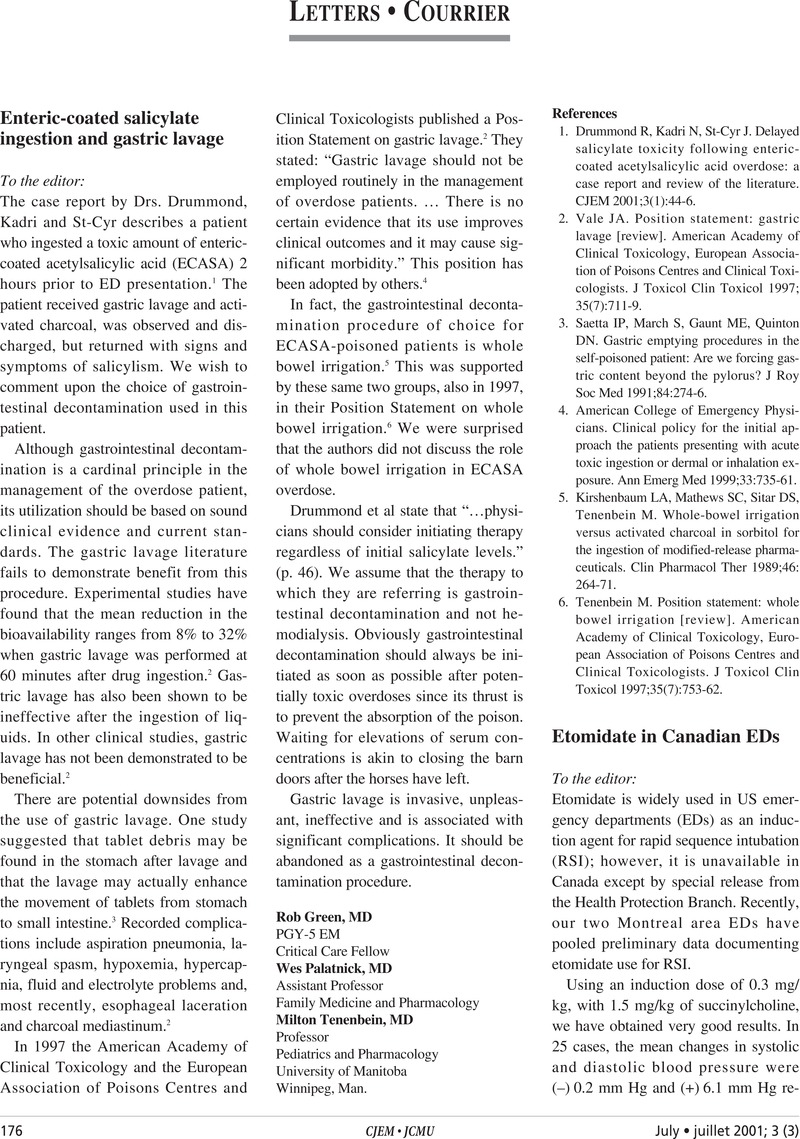No CrossRef data available.
Article contents
Etomidate in Canadian EDs
Published online by Cambridge University Press: 21 May 2015
Abstract
An abstract is not available for this content so a preview has been provided. As you have access to this content, a full PDF is available via the ‘Save PDF’ action button.

- Type
- Letters • Courrier
- Information
- Copyright
- Copyright © Canadian Association of Emergency Physicians 2001
References
1.Schenarts, CL, Burton, JH, Riker, R.Adrenocortical dysfunction following eto-midate induction in emergency department patients. Acad Emerg Med 2001;8:1–7.CrossRefGoogle ScholarPubMed
2.Sokolove, PE, Price, DD, Okada, P.The Safety of etomidate for emergency rapid sequence intubation of pediatric patients. Pediatr Emerg Care 2000;16(1):18–21.CrossRefGoogle ScholarPubMed
3.Smith, DC, Bergen, JM, Smithline, H, Kirschner, R.A trial of etomidate for rapid sequence intubation in the emergency department. J Emerg Med 2000;18(1):13–6.Google Scholar
4.Plewa, MC, King, R, Johnson, D, Adams, D, Engoren, M.Etomidate use during emergency intubation of trauma patients. Am J Emerg Med 1997;15(1):98–100.Google Scholar
5.Schneider, RE.Sedatives and induction agents. In: Walls, RM, et al, editors. Manual of emergency airway management. Philadelphia: Lippincott Williams & Wilkins; 2000. p. 132.Google Scholar




